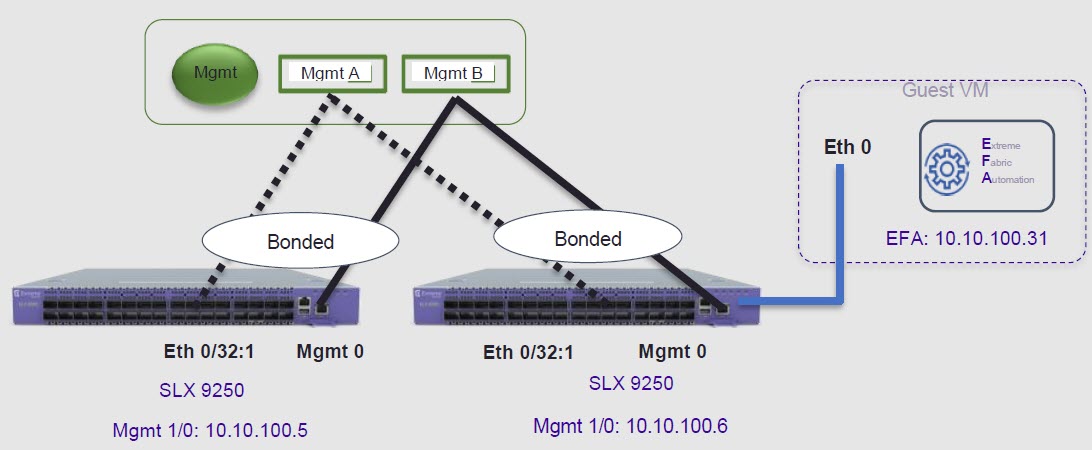Redundant Management Network
Redundant Management Network provides fault tolerance for the management path. This is done using Linux bonding by pairing the physical Management port of the chassis with any one of the physical front panel User Ports.

Linux Bonding
The redundant-management enable command can be used to pair one of
the front panel ports with the conventional Mgmt 0 port
to form a Linux Bonding interface, bond0 at SLX Linux
OS.
- The Linux bond will be in Active/Standby mode. The Physical Management port is
the primary and active port. The configured front panel port will be in Standby
mode.
- mode 1 supported by Linux Bonding with Mgmt 0 (eth0) is the primary port.
- The front panel port allows traffic through it only if Mgmt 0 is down. Mgmt 0 takes over Active port as soon as it recovers.
- If the active primary Mgmt 0 path experiences failure, SLX OS and TPVM OS can be reached through Standby path.
Supported Ports
Any SLX front panel port can be used at native speed and property for Linux Bonding.

Note
- SLX 9640 and SLX 9150 - Preferred ports are 10G/1G port in 1G mode.
- SLX 9640 - Avoid Insight port 0/24.
- SLX 9250 - Breakout mode 4x1G ports are available to allow the Mellanox adapter with 1G transceiver. As the adapter occupies whole cage, only the first member port (:1) can be used as redundant management interface.
No Redundancy Period
Redundancy is not supported if the device is reloaded or in ZTP mode.
- After reloading a device, use the
redundant-management enablecommand or startup config replay to enable Linux Bonding or redundancy. - Upon factory arrival, across first power cycle, or due to write erase CLI, ZTP mode is set in with factory default configuration.
- Breakout mode 1G ports are not supported in factory default configuration.
Standby Port Rate Throughput
Since internal path for Standby traffic is Control Plane traffic on PCIe Channel between ASIC and CPU, its function of internal CPU load is totally unrelated and independent of front panel physical port limit and capability.

